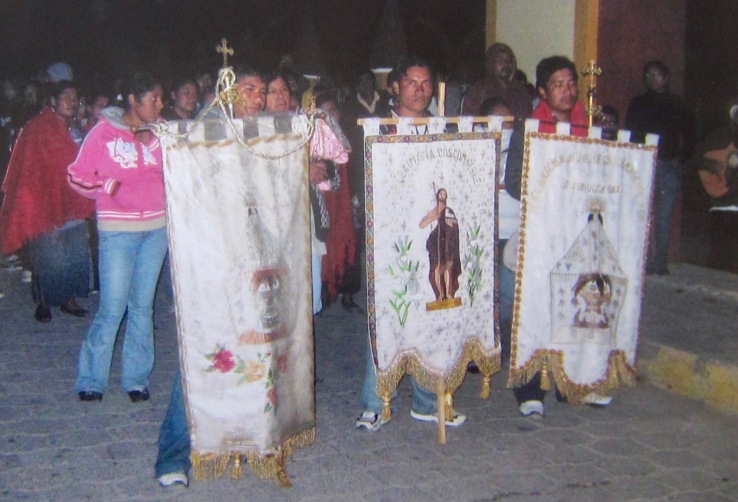
They are on their way. They’ve been on the move for a couple of days already. Coscomatepec Veracruz’s annual 14-day, 500 km, walking pilgrimage to the shrine of Our Lady of Juquila in Oaxaca is winding its way along roads and pathways for the 14th year in a row. I spoke to the group’s leader, Don Jaime, this morning (November 3, 2016) and he confirmed that they were right on schedule, past Orizaba and closing in on Ciudad Mendoza. I will meet them on November 10th on as they pause for breakfast in Oaxaca. Don Jaime and his fellow sojourners are helping me understand the dynamics of the burgeoning Juquila pilgrimage, and this vibrant cultural practice in Mexico today. We have no way of knowing how many people take part, but estimates indicate that is flourishing. In terms of Juquila, sources suggest that some 2.5 million people visit every year. Most arrive via buses and cars. But many make the trip on bikes, in running relays, or walking, enlivening the roads leading to the shrine with their banners, standards, matching t-shirts, and flower-festooned pick-up-truck altars carrying each group’s copy of the Virgin of Juquila. Some number in the 100s and have crews of support personnel taking care of food preparation, medical attention, and the vehicles bearing luggage and food.
Not all Mexican Catholics express their faith this way. There are class divisions, clearly. You do not find too many wealthy or middle-class Mexicans braving the sweaty crowds at popular religious festivals with their standing-room-only masses, down market venders, and carnival atmospheres. It is a truly a distinct, very public way of being Catholic. Millions of Mexicans find it very meaningful, and many others value this kind of devotional commitment even if they haven’t taken part. Some individuals may rarely attend Sunday mass, but make time for pilgrimage. It is hard to gauge its national impact, but it resides deep within Mexico’s cultural sinews. If you could pull back and map all the different pilgrimage devotions in Mexico and chart their feast days, you would see a net-like system of interweaving of routes and a year-round flow of different groups knitting together the national territory. There is a social network dimension that accompanies each and every pilgrimage too. Devotees do not take off on them blindly. Years of cultivating and maintaining contacts in towns along the way precede the annual journeys. If you keep digging, you often see a dense web of ties related to local commerce linking the devotees and their supporters across the distances too.
Don Jaime, a hale bearded man in his late 50s, gave me this picture taken during a previous year when we first spoke in August. He has been making the journey for 18 years straight: first as a member of another town’s pilgrimage while he studied the route and learned how to organize his own group. He dreams of rounding out his years as a pilgrim at 25, completing “mis bodas de plata” (my silver anniversary). In the picture you see Coscomatepec’s standard bearers. The two Virgin of Juquila standards always go in front. San Juan Bautista, Coscomatepec’s patron saint always brings up the rear.